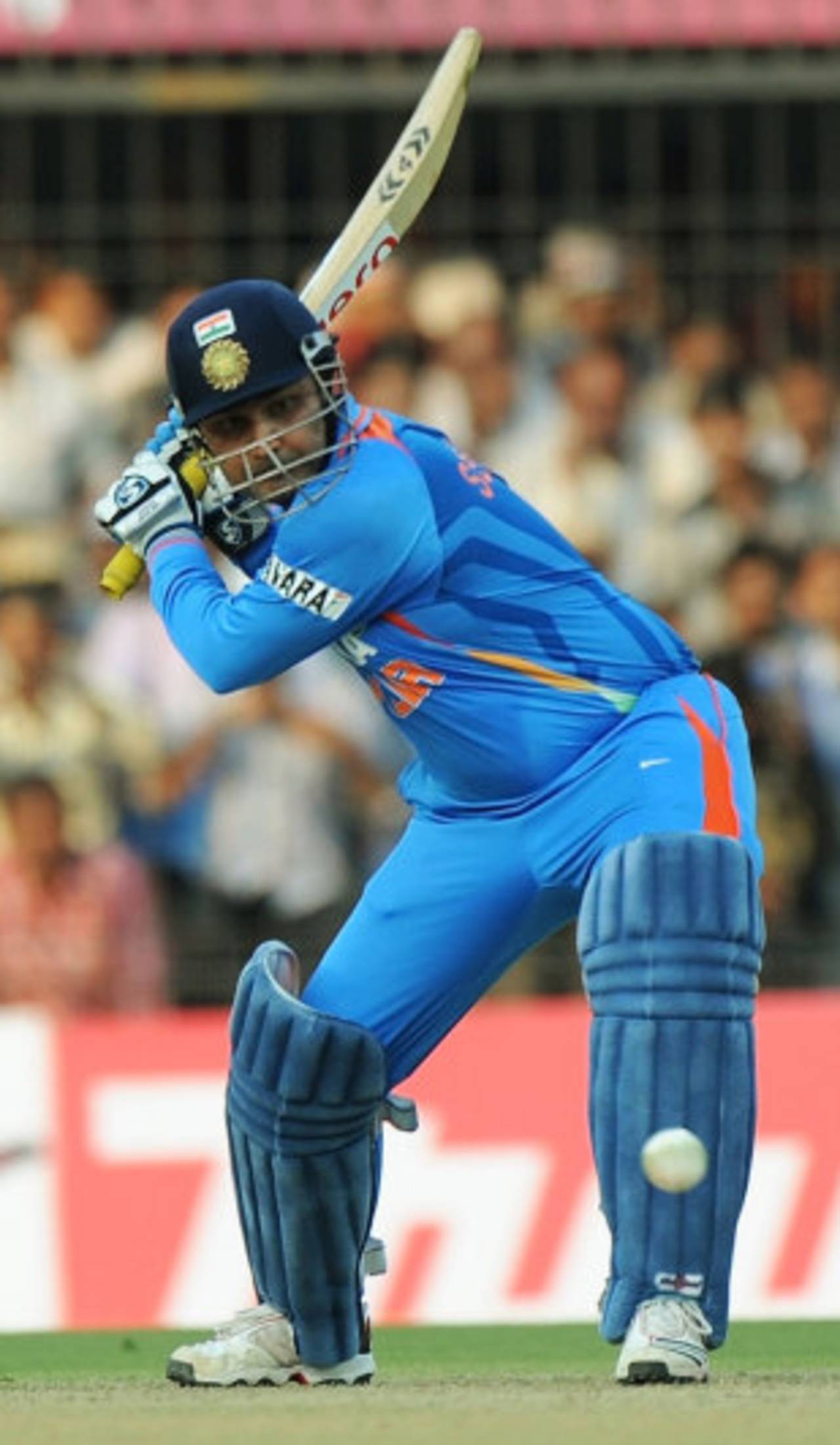Forget that
Virender Sehwag has always been one of the few tipped to get to the double-century mark in ODIs. Also forget that he was not the first to get there: he lost out to a freak combination of perfection, calculation and endurance from his idol. Just keep in mind that he has yet to end unbeaten when batting first in a non-shortened ODI. Imagine the day he does that, the day he bats for 3.3 overs longer than he did today.
Today will be a day for superlatives, and you could be excused for getting carried away and comparing this to Usain Bolt starting to celebrate in the last 10m and still smashing the 100m record at the 2008 Olympics. That Sehwag didn't seem to have to stretch himself might make you think so. Two hundred and nineteen might seem small the day he bats out 50 overs in good batting conditions.
Sehwag threatened to do it at the start of the World Cup earlier this year. In the
first match of the event he fought the temptation of hitting spinners out of Dhaka, he also fought the boredom of the middle overs and had to endure back trouble to get to 175. He decided later he could do without that much premeditation. He stopped conditioning his mind to bat long and went back to reacting to the ball and the immediate situation.
After the match in Indore he said you could only score ODI double-hundreds after the age of 30. "You need to be experienced," he said. He spoke of the Mirpur innings; the last time he batted 47 overs, he said, he scored only 175. This time he got 219. The difference mostly was that batting for a particular duration of time did not dominate his thinking, only batting did. His game, he has maintained, has relied solely on eliminating all premeditation: why cloud the mind by telling it you have to bat for a particular duration?
You could see he didn't put in that extra effort to last the whole innings today. He saw a flat pitch, a quick and small outfield, not the best bowling on offer, and wanted to enjoy the journey. If he could bat long enough, great; if not, so be it. During one particular spell in Mirpur, he went 30 balls without a boundary; the longest such drought today was 11 balls. Even during that period the pressure on bowlers was such that Darren Sammy, not wanting to pitch in Sehwag's hitting zone, gave away five wides down the leg side.
The delight of finding gaps, the soul of Sehwag's batting, was back today. One of the few things - perhaps the only thing - that West Indies got right was to cut off boundaries down the ground. Of his 25 fours and seven sixes, Sehwag hit 20 and two behind square respectively. A few of those admittedly came off rubbish bowling, especially the ones past short fine leg, but the ones through third man were the real deal.
Often he would show the bowlers only the inside edge of the bat, and with his wrists impart power to open-face shots, hit from in front of the stumps to behind square. A few of them came off slow bowling. It's a technique necessitated by pitches where the ball doesn't come on. Then there were two sixes behind square. The first upper-cut was played deliberately fine to miss third man, and the second was a good old-fashioned whack to celebrate the double. Then there was the paddle that he played without even bending.
The only predetermination was to get on top of the bowler early if the opportunity presented itself. Ravi Rampaul, Sunil Narine, Darren Sammy, Marlon Samuels and Kieron Pollard went for boundaries off the first balls they bowled to Sehwag. Then again Sehwag didn't go out of his way to manufacture a shot. He just reacted to what he might have thought were boundary balls, his definition of a boundary ball being completely different to anyone else's.
The reaction to this feat hasn't been one of surprise, despite the kind of year Sehwag has had: just one international century and the low of a king pair to his name so far. It's because we know only Sehwag has a thought process clear enough to come up with such an innings at the end of an average year. He came out today as if he had scored 150 in his last innings, while in fact he had taken seven innings to get his last 150 runs.
Sehwag's expected reaction to such slumps is to tell himself that when you play at the highest level for 10 years, you are bound to have one such year. The only time you could perhaps tell he was coming off a lean patch was when he - known for his often-careless running between the wickets - dived full length to make his crease when on 77, a sight the biggest cricket nerds will struggle to recall seeing before. He had got a start, and didn't want to throw it away through a run-out.
By the time he was done, he was left a tired man, he said. That didn't show until the last five overs or so when the fielders started throwing everything at his end. Until then he kept finding gaps delightfully, not letting the middle overs or defensive fields inhibit him. This aspect of his batting separates him from other big hitters in an era when batsmen have lost most of their fears, and is the reason why his record will remain under constant threat. From himself.
Sidharth Monga is an assistant editor at ESPNcricinfo
